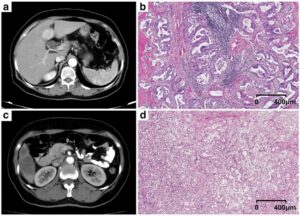This comparative study aimed to evaluate the effectiveness of machine learning models based on morphological MRI radiomics in the classification of parotid tumors. The authors developed three-step machine learning models with extreme gradient boosting (XGBoost), support vector machine (SVM), and decision tree (DT) algorithms in order to classify the parotid neoplasms into four subtypes. The study was able to demonstrate that machine learning based on morphological MRI radiomics may be used as an assistive tool for parotid classification.
Key points
- Machine learning algorithms combined with morphological MRI radiomics could be useful in the preliminary classification of parotid tumors.
- XGBoost algorithm performed better than SVM and DT in subtype differentiation of parotid tumors, while DT seemed to have a poor validation performance.
- Using morphological MRI only, the XGBoost and SVM algorithms outperformed radiologists in the four-type classification task for parotid tumors, thus making these models a useful assistant diagnostic tool in clinical practice.
Authors: Zhiying He, Yitao Mao, Shanhong Lu, Lei Tan, Juxiong Xiao, Pingqing Tan, Hailin Zhang, Guo Li, Helei Yan, Jiaqi Tan, Donghai Huang, Yuanzheng Qiu, Xin Zhang, Xingwei Wang & Yong Liu













